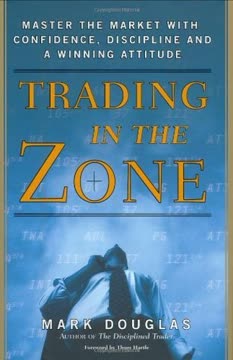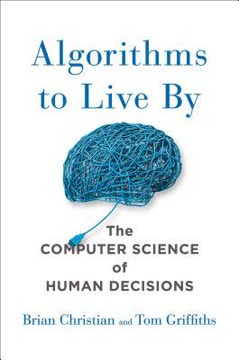Key Takeaways
1. Day Trading: High-Risk, High-Reward Financial Strategy
Day trading is a crazy business. Traders work in front of their computer screens, reacting to blips, each of which represents real dollars.
High stakes, quick decisions. Day trading involves buying and selling financial instruments within a single trading day, aiming to profit from small price movements. This strategy requires intense focus, quick decision-making, and a high tolerance for risk. Successful day traders often possess traits such as:
- Independence and self-discipline
- Ability to handle stress and emotional pressure
- Quick analytical thinking and pattern recognition skills
- Comfort with technology and data analysis
Day trading is not for everyone. It requires substantial capital, time commitment, and emotional resilience. Most day traders lose money, especially in their first year, with an estimated 80% failure rate. However, those who succeed can potentially earn significant returns.
2. Essential Tools and Setup for Day Trading Success
Day trading is possible only because technology costs have come down dramatically over the years. That makes it feasible to set up shop in the comfort of your home.
Technology drives day trading. A proper setup is crucial for day trading success. Key components include:
- High-speed internet connection (at least 1.5/256 DSL)
- Multiple monitors (at least two, preferably more)
- Powerful computer with ample RAM and storage
- Reliable trading platform with real-time data feeds
- Backup systems (secondary internet, spare computer)
Additionally, day traders need access to:
- Level II quotes and time & sales data
- Charting software with technical indicators
- News feeds and economic calendars
- Risk management tools
A dedicated workspace, free from distractions, is essential for maintaining focus during trading hours.
3. Understanding Market Psychology and Technical Analysis
For every buyer, there is a seller. There has to be, or no transaction will take place. The price changes to reach the point where the buyer is willing to buy the security and the seller is willing to part with it.
Market sentiment drives prices. Understanding market psychology is crucial for day traders. Prices are influenced by the collective emotions and decisions of market participants. Key concepts include:
- Support and resistance levels
- Trend identification and momentum
- Volume analysis and price action
- Market cycles and sentiment indicators
Technical analysis tools help traders interpret these psychological factors:
- Chart patterns (e.g., head and shoulders, cup and handle)
- Candlestick formations
- Moving averages and other technical indicators
- Fibonacci retracements and extensions
By mastering these concepts, day traders can better predict short-term price movements and make informed trading decisions.
4. Fundamental vs. Technical Analysis in Day Trading
Fundamental analysis can actually hurt you in day trading, because you may start making decisions for the wrong reasons.
Short-term focus trumps fundamentals. While fundamental analysis is crucial for long-term investing, day traders primarily rely on technical analysis. Here's why:
- Day traders focus on short-term price movements, not long-term value
- Market sentiment and momentum often override fundamental factors in the short term
- Technical analysis provides more actionable signals for intraday trading
However, day traders should not completely ignore fundamentals:
- Major economic events and news releases can cause significant price swings
- Understanding sector and industry trends can help identify potential trading opportunities
- Fundamental factors can influence support and resistance levels
The key is to find a balance, using fundamental knowledge to provide context while relying on technical analysis for trade execution.
5. Risk Management and Position Sizing Strategies
As long as there is some probability of loss, no matter how small, there is some probability that you can lose everything when you are trading.
Protect your capital. Effective risk management is crucial for long-term success in day trading. Key strategies include:
- Setting stop-loss orders to limit potential losses
- Using proper position sizing based on account size and risk tolerance
- Diversifying trades across different securities and sectors
- Implementing a consistent money management system
Popular money management approaches:
- Fixed fractional: Risking a set percentage of account on each trade
- Fixed ratio: Increasing position size as account grows
- Kelly Criterion: Optimizing position size based on win rate and risk-reward ratio
Additionally, day traders should:
- Never risk more than 1-2% of their account on a single trade
- Have a clear exit strategy for both winning and losing trades
- Regularly review and adjust their risk management approach
6. Leveraging and Short Selling in Day Trading
Leverage not only adds risk to your own account, it adds risk to the entire financial system.
Double-edged sword of amplified returns. Leverage and short selling are powerful tools that can significantly increase potential profits, but also magnify losses. Key points:
Leverage:
- Allows traders to control larger positions with less capital
- Typically offered through margin accounts or derivative instruments
- Can lead to outsized gains or devastating losses
Short selling:
- Enables profiting from price declines
- Involves borrowing shares to sell, then buying back at a lower price
- Carries theoretically unlimited risk if prices rise
Risks and considerations:
- Margin calls can force liquidation of positions at unfavorable times
- Short squeezes can cause rapid price spikes, leading to large losses for short sellers
- Regulatory restrictions may limit leverage and short selling in certain markets
Traders should use these tools cautiously and only after thoroughly understanding their mechanics and risks.
7. Arbitrage: Exploiting Price Discrepancies for Profit
In theory, arbitrage is riskless. It's illogical for the same asset to trade at different prices, so eventually the two prices must converge.
Profiting from market inefficiencies. Arbitrage involves simultaneously buying and selling related securities to profit from price discrepancies. Types of arbitrage:
- Pure arbitrage: Exploiting price differences in identical assets across markets
- Statistical arbitrage: Trading correlated securities based on historical price relationships
- Merger arbitrage: Profiting from price differences in merging companies' stocks
Challenges and considerations:
- True arbitrage opportunities are rare and often short-lived
- Transaction costs can easily erode potential profits
- Requires sophisticated technology and fast execution
- Risk arbitrage strategies involve some degree of uncertainty
Successful arbitrage trading often requires:
- Advanced quantitative skills and market knowledge
- High-speed trading systems and data feeds
- Access to multiple markets and asset classes
- Substantial capital to exploit small price discrepancies
8. Tax Implications and Legal Considerations for Day Traders
Taxes themselves aren't necessarily bad, because somehow we have to pay for things like roads and schools and national defense. But taxes can be devastating to your personal finances if you haven't planned for them.
Navigate the tax maze. Day trading has unique tax implications and legal considerations. Key points:
Tax considerations:
- Profits are typically taxed as short-term capital gains (ordinary income rates)
- Wash sale rule can disallow loss deductions on securities repurchased within 30 days
- Mark-to-market accounting can provide tax advantages for qualifying traders
Legal and regulatory issues:
- Pattern day trader rules require minimum account balances and margin restrictions
- Securities and Exchange Commission (SEC) and Financial Industry Regulatory Authority (FINRA) regulations govern trading activities
- Anti-money laundering laws require proper documentation and reporting
Day traders should:
- Keep detailed records of all trades and expenses
- Consult with a tax professional familiar with trading tax laws
- Stay informed about changing regulations and compliance requirements
- Consider forming a business entity for potential tax and legal benefits
Understanding and properly managing these tax and legal aspects can significantly impact a day trader's bottom line and long-term success.
Last updated:
FAQ
What's Day Trading For Dummies about?
- Comprehensive Introduction: Day Trading For Dummies by Ann C. Logue offers a thorough introduction to day trading, explaining its mechanics, risks, and how it differs from investing and gambling.
- Practical Guidance: The book provides practical advice on setting up a trading business, choosing a brokerage, managing money, and developing a trading plan.
- Tools and Strategies: It covers various tools and strategies, including technical analysis and market indicators, and emphasizes the psychological aspects crucial for trading success.
Why should I read Day Trading For Dummies?
- Beginner-Friendly: Designed for newcomers, the book breaks down complex concepts into easy-to-understand sections without assuming prior knowledge.
- Comprehensive Resource: It serves as a one-stop resource for understanding day trading fundamentals, including regulations, tools, and strategies.
- Real-World Examples: The author includes cautionary tales and examples to illustrate potential pitfalls and successes, helping readers understand the stakes involved.
What are the key takeaways of Day Trading For Dummies?
- Day Trading as a Business: Treat day trading as a serious business requiring a well-thought-out plan and commitment, akin to a full-time or part-time job.
- Risk Management: Effective money management and risk assessment are vital for long-term success, with strategies like fixed fractional and Kelly Criterion methods discussed.
- Psychological Preparedness: Managing emotions like fear and greed is essential, with the importance of having and sticking to a trading plan highlighted.
What are the best quotes from Day Trading For Dummies and what do they mean?
- "The market doesn’t know that you’re in it.": This quote emphasizes not taking market movements personally, as the market operates independently of individual positions.
- "Good day traders are independent.": Highlights the entrepreneurial spirit required, suggesting successful traders must be self-reliant and capable of independent decision-making.
- "You can’t trade without a plan.": Underscores the necessity of a well-defined trading strategy to avoid impulsive decisions and potential losses.
What is the difference between day trading and investing as explained in Day Trading For Dummies?
- Time Horizon: Day trading involves buying and selling within the same day, while investing involves holding assets for the long term.
- Risk and Reward: Day trading is riskier, relying on short-term price movements, whereas investing seeks long-term growth and tolerates short-term volatility.
- Market Dynamics: Day traders operate in a zero-sum market, while investing can lead to overall market growth, benefiting multiple investors.
How do I set up my trading account according to Day Trading For Dummies?
- Choose a Brokerage: Select a brokerage offering day trading services, low commissions, and fast execution speeds, with necessary tools and resources.
- Understand Margin Requirements: Be aware of margin requirements, as day traders often use leverage to increase buying power, with risks explained.
- Open a Margin Account: Typically, a margin account is needed for day trading, allowing fund borrowing, with steps and documentation outlined.
What are some common day trading strategies mentioned in Day Trading For Dummies?
- Technical Analysis: Involves using charts and indicators to identify trading opportunities based on price movements and patterns.
- Scalping: Entails making numerous small trades to capitalize on minor price fluctuations, requiring fast execution and real-time data.
- Momentum Trading: Focuses on stocks moving significantly in one direction, aiming to capitalize on that movement using specific indicators.
How can I manage my money effectively while day trading according to Day Trading For Dummies?
- Set Clear Limits: Establish loss limits and profit targets for each trade to manage risk effectively.
- Use Position Sizing: Determine how much capital to risk on each trade based on your strategy, using methods like fixed fractional and Kelly Criterion.
- Diversify Your Trades: Avoid concentrating all capital in a single trade to reduce risk, spreading investments across multiple trades.
What are the psychological challenges of day trading as outlined in Day Trading For Dummies?
- Emotional Control: Managing emotions like fear, greed, and anxiety is crucial for rational decision-making in trading.
- Stress Management: Having a support system and engaging in activities outside trading can alleviate stress and prevent burnout.
- Avoiding Burnout: Taking breaks and maintaining a balanced lifestyle can improve trading performance and prevent burnout.
What are some common mistakes day traders make according to Day Trading For Dummies?
- Unrealistic Expectations: Entering the market with hopes of quick profits without understanding the risks is a common mistake.
- Lack of a Trading Plan: Failing to develop and adhere to a trading plan can lead to impulsive decisions and losses.
- Overtrading: Trading too frequently or without sufficient analysis can result in unnecessary losses and increased transaction costs.
How do I choose the right brokerage for day trading according to Day Trading For Dummies?
- Direct Access: Look for brokers offering direct market access and real-time data for immediate action on price quotes.
- Commission Structure: Consider commission rates and fees, as they impact profitability, beyond just the per-trade commission.
- Trading Platform: Evaluate the platform's features, including charting tools and order execution capabilities, for effective trading.
What resources does Day Trading For Dummies recommend for further learning?
- Books and Guides: Lists recommended readings covering various trading and investing aspects for deeper insights.
- Websites and Online Tools: Suggests websites offering trading tools, market data, and educational resources to improve skills.
- Trading Communities: Encourages joining forums or clubs for support and shared knowledge, exchanging ideas and strategies.
Review Summary
Day Trading For Dummies receives mixed reviews, with an average rating of 3.51/5. Some readers find it a helpful introduction to day trading basics, covering strategies, risks, and terminology. Others criticize it for being disorganized, lacking depth, or focusing too much on general investing concepts. Many appreciate the book's emphasis on the high risks and failure rates in day trading. While some find it informative for beginners, more experienced traders often feel it doesn't offer enough new information or practical strategies for actual day trading.
Similar Books










Download PDF
Download EPUB
.epub digital book format is ideal for reading ebooks on phones, tablets, and e-readers.




